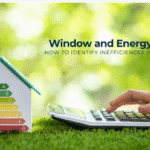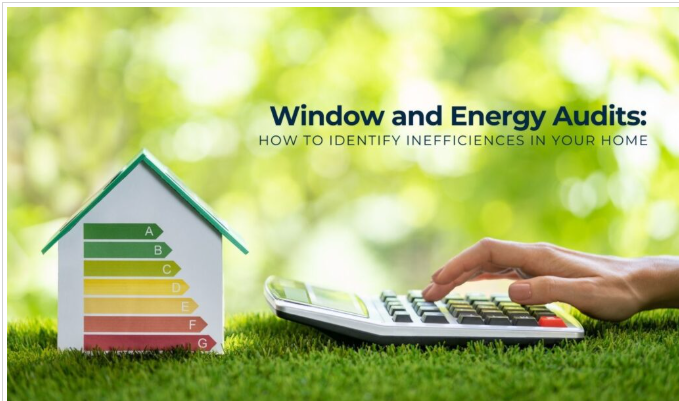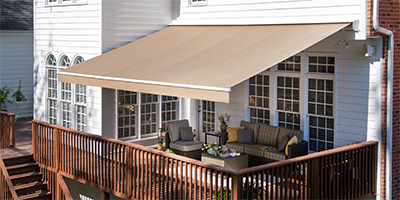Windows are more than just openings to the outside; they are critical components in a home’s comfort, energy efficiency, and long-term value. Inefficient or aging windows can lead to drafts, uneven temperatures, higher energy bills, and diminished overall comfort. For homeowners looking to improve home performance and reduce costs, understanding how to identify inefficient windows and exploring solutions for long-term efficiency is essential.
This comprehensive guide provides a calm, professional, and homeowner-focused approach. It explains the signs of inefficient windows, practical repair and replacement options, and ways to improve energy efficiency while ensuring decisions are informed and stress-free.
Why Energy Efficiency in Windows Matters
Energy-efficient windows help maintain consistent indoor temperatures and reduce the demand on heating and cooling systems. Properly functioning windows also protect your home from moisture, improve comfort, and contribute to long-term savings.
Benefits of energy-efficient windows include:
- Lower Energy Costs: Efficient windows reduce heating and cooling needs, translating into tangible savings.
- Improved Indoor Comfort: Reduced drafts and consistent temperatures make rooms more livable.
- Noise Reduction: Energy-efficient windows often provide better sound insulation.
- Moisture and Weather Protection: High-quality windows keep out water infiltration, reducing the risk of damage.
- Increased Home Value: Well-maintained, energy-efficient windows enhance resale value.
Investing in energy efficiency is not only about saving on bills — it also contributes to a healthier, more comfortable home environment.
Common Signs Your Windows May Be Inefficient
Homeowners can often identify inefficient windows through careful observation. Here are some common indicators:
1. Drafts or Cold Spots
Drafts are one of the most noticeable signs of inefficiency. Cold air seeping in during winter or hot air entering during summer indicates worn weatherstripping, failed seals, or gaps around the frame.
2. Difficulty Operating Windows
Windows that stick, drag, or fail to latch properly may have misaligned sashes, worn hardware, or track issues. Poor operation can prevent the window from sealing correctly, reducing energy efficiency.
3. Condensation Between Panes
Fogging or moisture trapped between glass panes is a clear sign that the insulated glass unit (IGU) has lost its effectiveness. This compromises insulation and reduces energy performance.
4. Increased Energy Bills
A noticeable rise in heating or cooling costs can signal that your windows are allowing air to escape or enter uncontrolled, forcing your HVAC system to work harder.
5. Visible Damage
Cracked glass, warped frames, or deteriorated seals compromise insulation and energy efficiency. Prompt attention to these issues prevents them from worsening.
6. External Noise
If outside sounds suddenly become more noticeable indoors, it could indicate compromised seals or inadequate insulation, which also affects energy performance.
Recognizing these signs early allows homeowners to act before problems escalate into costly repairs or full replacement.
Repair Solutions That Improve Efficiency
Not all energy efficiency problems require a full window replacement. Targeted repairs can often restore performance and comfort:
Weatherstripping Replacement
Replacing old or missing weatherstripping reduces drafts and air leakage, improving insulation and indoor comfort.
Caulking and Seal Maintenance
Exterior caulking degrades over time due to weather exposure. Re-caulking prevents air and water infiltration, preserving the integrity of the window frame.
Hardware Repairs
Locks, handles, hinges, and balance systems are essential for proper window operation. Adjusting or replacing faulty hardware ensures windows close tightly, maintaining insulation.
Insulated Glass Unit (IGU) Replacement
Fogged or damaged glass panes can often be replaced without removing the entire window. This restores thermal performance and clarity.
Track Cleaning and Sash Adjustment
Dirt or misalignment in window tracks can impede proper sealing. Cleaning and adjusting tracks ensures smooth operation and reduces energy loss.
By addressing these areas, homeowners can enhance energy efficiency and comfort while avoiding the cost and disruption of full window replacement.
When Replacement Is the Better Option
While repairs are effective for many issues, some situations call for full window replacement:
- Severely Damaged Frames: Rot, warping, or structural weakness affects efficiency and safety.
- Repeated Condensation: IGU replacement may not suffice if seals repeatedly fail.
- Aging Windows: Older windows may not meet modern energy efficiency standards.
- Persistent Drafts: When repeated repairs fail to restore proper sealing, replacement may be the most practical solution.
- Frequent Hardware Failures: Continuous operational issues indicate the window may no longer function as designed.
Professional evaluation can determine when repair is sufficient and when replacement ensures long-term energy savings.
Selecting the Right Energy-Efficient Windows
When considering replacement, homeowners should evaluate several factors:
Glass Options
- Low-E Coatings: Reflect heat while allowing light in.
- Double or Triple-Pane Glass: Provides superior insulation.
- Gas Fills (Argon or Krypton): Improves thermal performance between panes.
Frame Materials
- Vinyl: Low maintenance and good insulation.
- Fiberglass or Composite: Strong, durable, and energy-efficient.
- Wood with Proper Sealing: Classic look with good performance if well-maintained.
Professional Installation
Even high-quality materials cannot perform optimally without proper installation. Skilled contractors ensure windows are sealed and aligned correctly, maximizing energy efficiency.
Selecting the right combination of glass, frame, and installation practices provides long-term comfort and cost savings.
Maintenance Tips to Preserve Efficiency
Even energy-efficient windows benefit from regular care:
- Inspect weatherstripping and seals annually.
- Clean tracks, sashes, and frames to maintain smooth operation.
- Reapply exterior caulking as needed.
- Operate windows periodically to prevent sticking and maintain alignment.
- Address minor issues promptly to prevent energy loss.
Consistent maintenance prolongs window life, maintains comfort, and supports ongoing energy efficiency.
Professional Support for Energy-Efficient Windows
While minor maintenance can be handled by homeowners, professional contractors provide expertise for more complex tasks. Benefits of professional involvement include:
- Accurate assessment of current window performance.
- Recommendations for repairs or replacement aligned with energy efficiency goals.
- Proper installation and sealing to ensure optimal insulation.
- Long-lasting results, reducing the likelihood of recurring issues.
For homeowners considering upgrades, exploring Zen Windows Pittsburgh offers a practical starting point to learn about options, professional support, and long-term solutions.
Conclusion:
Energy-efficient windows play a crucial role in maintaining indoor comfort, reducing energy costs, and enhancing home value. By identifying inefficient windows, exploring practical repairs, and considering well-chosen replacements, homeowners can maximize long-term performance.
Professional evaluation and installation ensure that the windows function as designed, providing peace of mind and reliable results. Combining these choices with consistent maintenance preserves efficiency, comfort, and value for years to come.
For homeowners ready to enhance home performance, starting with Zen Windows Pittsburgh offers guidance and professional support for the best long-term solutions.











